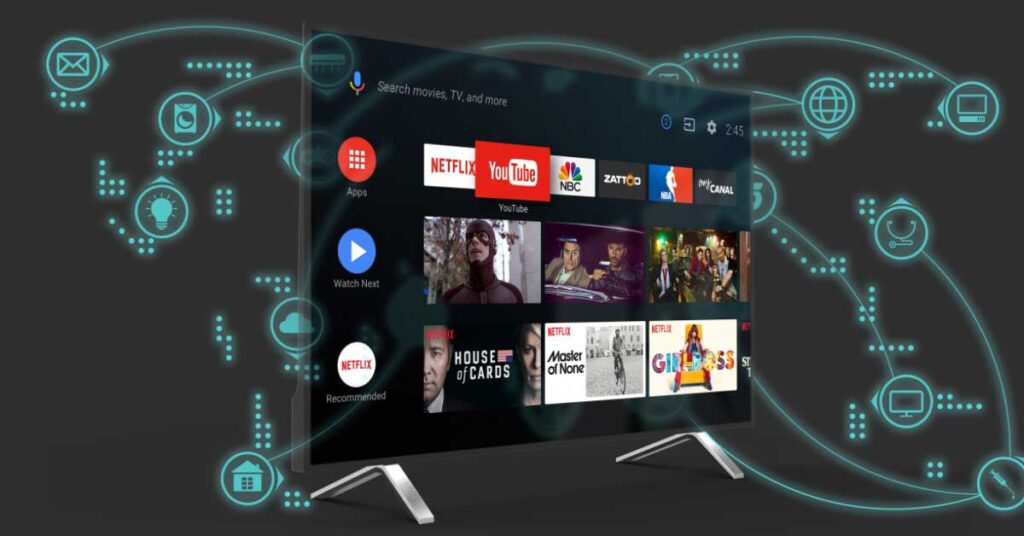The integration of artificial intelligence (AI) into smart TVs is transforming the way we consume content and interact with our devices. By leveraging advanced algorithms and machine learning, AI enhances not only the viewing experience but also the overall functionality of smart TVs. Let’s explore how AI is revolutionizing the world of home entertainment.
Key Features of AI in Smart TVs
- Personalized Content Recommendations:
- AI analyzes your viewing habits, preferences, and ratings to suggest shows, movies, and even channels tailored to your tastes. This feature helps you discover new content without the hassle of searching through endless menus.
- Voice Control and Virtual Assistants:
- Many smart TVs now come with built-in voice assistants like Amazon Alexa, Google Assistant, or proprietary systems. This allows users to control their TV and smart home devices using voice commands, making it easier to search for content, adjust settings, or even control lighting.
- Enhanced Picture and Sound Quality:
- AI-driven technologies can optimize picture and sound quality in real-time. For example, AI can adjust brightness and contrast based on ambient light conditions, or fine-tune audio settings to match the type of content being watched, resulting in a more immersive experience.
- Smart Search Capabilities:
- AI enhances search functionality by enabling natural language processing. You can ask your TV complex questions, like “Show me action movies with strong female leads,” and receive accurate results without having to navigate through categories.
- Content Creation and Curation:
- Some platforms utilize AI to curate original content or assist creators in producing new shows and films. This includes analyzing trends, audience engagement, and feedback to guide content development.
- Automated Updates and Maintenance:
- AI can manage software updates and system maintenance, ensuring that your smart TV remains up-to-date with the latest features and security enhancements without requiring manual intervention.
Benefits of AI in Smart TVs
- Enhanced User Experience:
- With personalized recommendations and voice control, AI makes it easier and more enjoyable to find and watch your favorite content.
- Increased Accessibility:
- AI technologies can improve accessibility for users with disabilities, providing features like voice navigation, closed captioning, and audio descriptions.
- Time-Saving:
- AI streamlines the content discovery process, allowing viewers to spend less time searching and more time enjoying their favorite shows and movies.
- Smart Home Integration:
- AI-enabled smart TVs can serve as a central hub for controlling other smart devices in your home, such as lights, thermostats, and security systems, creating a more cohesive smart home experience.
Challenges and Considerations
- Privacy Concerns:
- The data collected by AI systems for personalized recommendations raises privacy issues. Users should be aware of how their viewing habits are tracked and used.
- Dependency on Technology:
- As smart TVs become more advanced, users may find themselves relying heavily on technology, which could diminish the experience of traditional viewing.
- Learning Curve:
- For some users, especially those less familiar with technology, navigating AI features and settings can be daunting.
Conclusion
The integration of AI into smart TVs is revolutionizing the home entertainment landscape, enhancing how we discover, interact with, and enjoy content. From personalized recommendations to voice control and improved picture quality, AI is creating a more engaging and user-friendly viewing experience. As technology continues to evolve, we can expect even more innovative features that will further enrich our enjoyment of television and media. Embracing these advancements can lead to a more connected and satisfying entertainment experience in the comfort of our homes.



